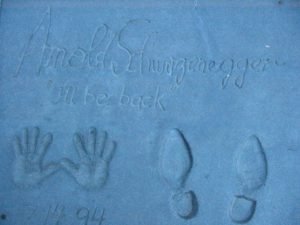I am a compulsive researcher. If it were not such a useful compulsion, I would need a twelve-step program to break the habit. I can get hooked on almost any research project, although I tend to obsessively research things that interest me like history, motion pictures and the supernatural, which, like religion, has long been a topic of interest to me without my necessarily believing in the suspension of the laws of nature.

I am especially motivated to spend hours poring over records if I feel an emotional connection with a subject, for example, a person who has been overlooked despite having led an interesting life or who never realized success in spite of their talent. Included among these was an obscure Hollywood talent agent named Marty Martyn, who was not especially talented but has become the subject a renewed interest in his possible afterlife.
A few years ago, I received an email from Dr. Jim B. Tucker, a Charlottesville, Virginia psychiatrist who curates a database containing almost two thousand case studies, collected over nearly sixty years, of small children who spontaneously claimed to remember past lives. Dr. Tucker, who has written a couple of books about these cases, was emailing me about a problem for which I was at least partly responsible.
In his 2013 book, Return to Life, Dr. Tucker had written about a boy named Ryan who, beginning about age four, told his mother that he remembered working in Hollywood in a previous life. Not all of his memories were pleasant. Some even gave him nightmares. Ryan’s mother, Cyndi, contacted Dr. Tucker to ask for his help both with her son’s “memories” and in identifying the man he claimed to have been. She had shown the still illiterate boy some books of Hollywood photographs, and Ryan had identified a picture of “himself” in a still from the 1933 film Night After Night. The trouble was that the man he pointed out was not identified in the text. Dr. Tucker subsequently interviewed the boy and assigned several people the task of identifying the man in the picture. After some false leads, he finally discovered that the man was Marty Martyn.
When Dr. Tucker first looked up Martyn on the Internet Movie Database (IMDb), it only gave his name and the one credit for Night After Night. No other information about him was listed. In his book, he laid out many (though not all) of the facts he uncovered about Martyn and showed that these bore an uncanny resemblance to fifty-five items in Ryan’s account of his past life.
I was drawn to the portraits that Dr. Tucker painted of both Ryan and Martyn, although I also saw Martyn as a flawed man who, as Ryan related, had cause for many regrets. Aside from having four wives, he worried about his relationships with his daughter and step-children. Martyn did lead an interesting life, though. He danced on Broadway and traveled the world on a cruise ship before going to Hollywood. After quitting acting, he became a talent agent and represented stars like Glenn Ford and hobnobbed with others like Rita Hayworth. He lived exceedingly well, but not entirely due to his own achievements; the last of his four wives was the niece of the president of Twentieth Century Fox.
Sometimes Ryan behaved like an ordinary little boy, but at other times he seemed to channel the cigar-chomping talent agent he claimed to have been. When he was five, Ryan visited his mother at her work and picked up a ringing phone and handed it to his mother but then cut the call before his mother could take it. When his mother chided him for hanging up on someone, Ryan remarked that it was a wrong number and that the caller was “an idiot.” A moment later, the phone rang again. This time Cyndi answered and found that the caller did indeed have the wrong number and when she told him so, he insisted that he knew better. (Tucker says that Ryan’s seeming psychic ability, which only surfaced occasionally, is unusual in these cases.)

Being fascinated with Hollywood and its lore, I decided not only to add the information from Tucker’s book to the IMDb entry for Marty Martyn but to do my own research into Martyn’s background. Using information gathered from census, birth and marriage records, and the Internet Broadway Database (IBDb), which were time-consuming but fun to explore, I added information about his family of origin (including his real name, Morris Kolinsky), where he had worked, who he married, where he lived and the circumstances of his death. When I was done, IMDb had more information listed about Martyn than about most people who had appeared in only one movie.
It was because of this research that Dr. Tucker contacted me a year or so later. Many people were arguing that, since there was so much information about Marty Martyn on IMDb, wasn’t it more likely that Ryan and his family had gotten all of his “uncanny” information from the internet? In my exchange with Dr. Tucker, I confirmed that I was responsible for most of the information in the entry and that I had submitted it only after reading his book. I also told Dr. Tucker that anytime someone made that argument, he could refer to me by name and email address. I have not heard anything more about the matter since.

Share this post with your friends.

